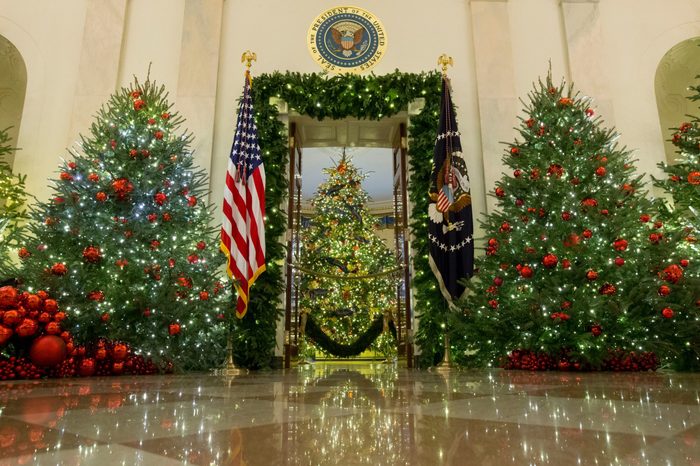
The beginning of a tradition
The first of the White House ornaments, created by the White House Historical Association, was released in 1981 (it honored George Washington). The keepsake was hung on the Blue Room Christmas tree in the White House, starting the tradition of hanging the official ornament on that tree every year. Since then, new White House ornaments have been unveiled every year, honoring either a president or a White House milestone. Read on to learn about some of the strange stories behind a few of the White House ornaments. They happen to be some of the most iconic White House holiday decorations. Also, learn about these things you never knew about the White House Christmas tree.
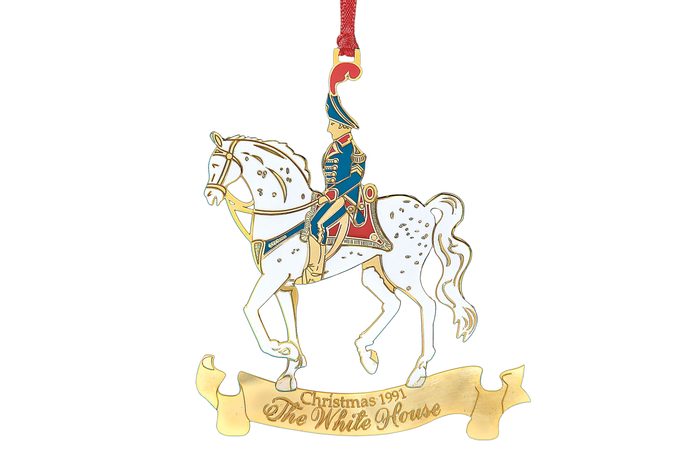
1991: The President for 1 Month
The 1991 ornament (above) paid tribute to our shortest-serving leader: 9th president William Henry Harrison (March 4, 1841-April 4, 1841). Among chief executives, he was special in many respects: He was the last president to be born a British subject (he was born before the War of Independence), he gave the longest inaugural address ever (nearly two hours!), he was the first president to die in office, and he served for the shortest time. He died from pneumonia only 32 days after taking office. This ornament highlights his unusual mode of transportation on his inauguration day: Forgoing the usual carriage, he rode in the procession on a white horse. While it was long thought that this made him catch a cold and thus caused his untimely death, historians now don’t believe that to be true. Here are some more surprising, little-known facts about our nation’s presidents.
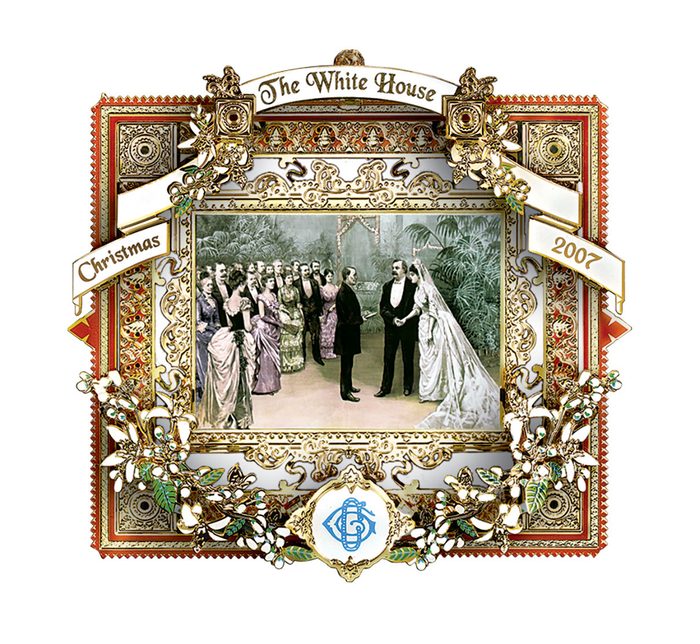
2007: The President Who Had a White House Wedding
This ornament honors Grover Cleveland, the only president to have served two non-consecutive terms. He was both the 22nd commander-in-chief (1885-1889) and the 24th (1893-1897). Cleveland was also part of a singular White House event: He was the only president to get married there. On June 2, 1886, the 49-year-old married 21-year-old Frances Folsom in the Blue Room. This illustration was a tinted reproduction of an engraving made at the time of the bride and groom. These are some other true stories of how presidents met their first ladies.
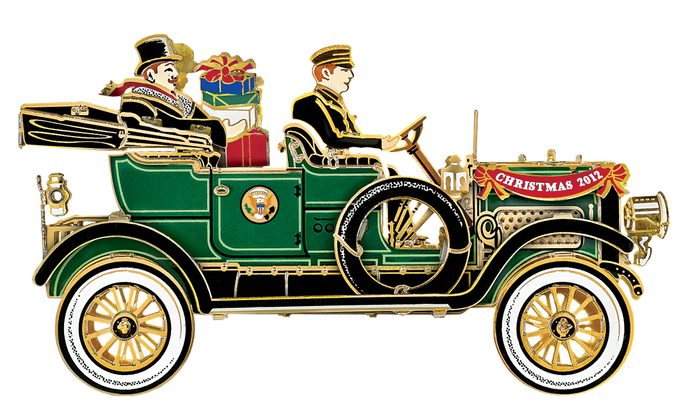
2012: The President Who Went on to the Highest Court
This ornament honored William Howard Taft, our 27th chief executive (1909-1913) and the first to ride in an automobile rather than a horse-drawn carriage. Taft loved manufacturing and new inventions, and he embraced modernity. After he left the presidency, he was appointed to the Supreme Court. He became the only President to serve as Chief Justice, and due to his unique position, he was the only former President to swear in two of his successors: Calvin Coolidge (in 1925) and Herbert Hoover (in 1929). This ornament showed him in a car with his wife, Helen, who left her own impressive legacy. She arranged for more than 3,000 Japanese cherry trees to be planted around the Tidal Basin, delighting visitors to this day. Brush up on your first lady trivia with these surprising facts.
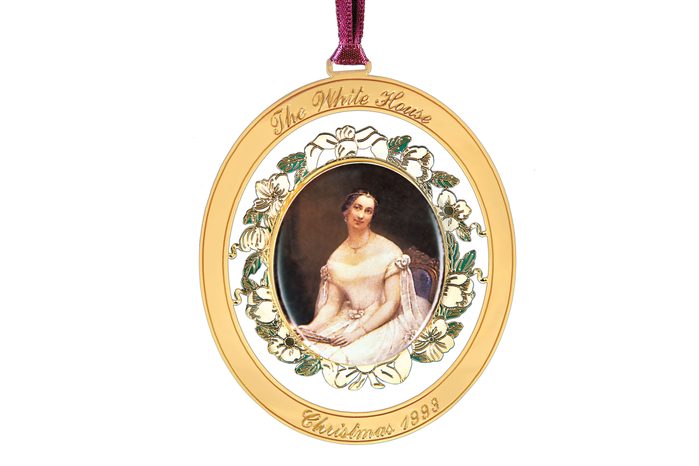
1993: The President Who Was a Father 15 Times
Of all the White House ornaments, this has been the only one to showcase a First Lady (Julia Gardiner Tyler) in order to commemorate a president: John Tyler, the 10th commander-in-chief (1841-1845). However, some might call Julia the second lady. She and Tyler married after his first wife, Letitia, passed away from a stroke in 1842. He and Julia wed in 1844 when he was 54 and she was just 24 (and five years older than his eldest daughter). Julia lived in the White House for a brief nine months (the Tylers moved out in March 1845 when John’s term ended). Out of all the presidents, Tyler fathered the most children: 8 with Letitia and 7 with Julia. Did you know these facts about the White House you might have missed in history class?
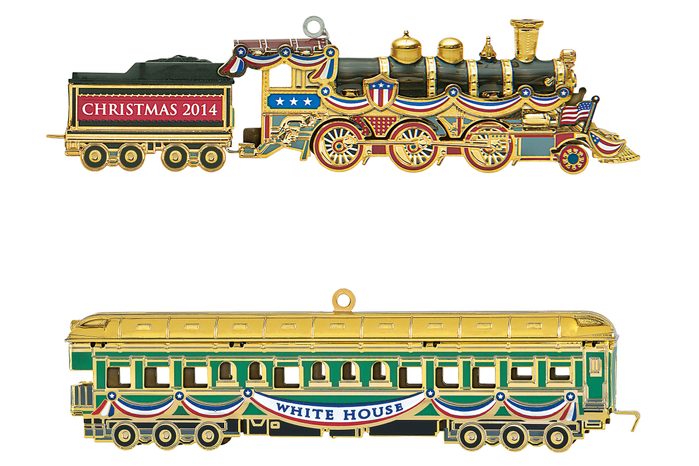
2014: The President Who Loved Trains
This ornament honored Warren G. Harding, the 29th president (1921-1923). As a boy, Harding wanted to be a train engineer, a wish that he fulfilled for 51 minutes when as president, he took over the controls on the Alaskan railroad during the Voyage of Understanding, his transcontinental speaking tour. The top car is a replica of the Presidential Special, the train that carried Harding west on his voyage (and that also would bring his casket east two months later). The bottom car is the Superb, the president’s private Pullman car that was pulled by the Special. The last known photograph of Harding was taken on the Superb shortly before his sudden death from a cerebral hemorrhage in a San Francisco hotel on August 2, 1923.
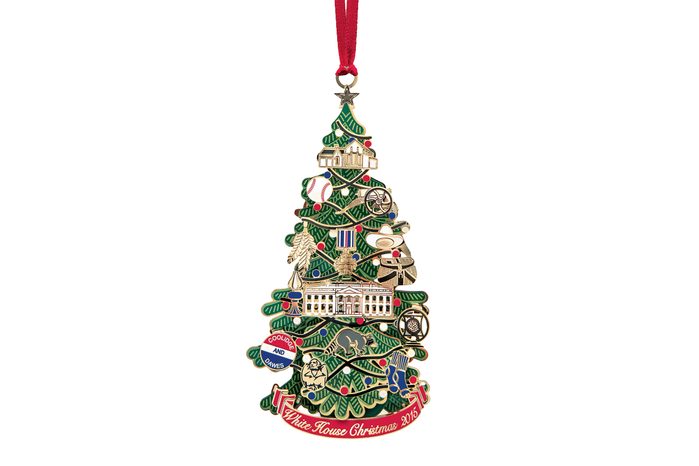
2015: The President Who Brought Christmas Cheer
This ornament honors 30th president Calvin Coolidge (1923-1929). He was in office at the time of the lighting of the first National Christmas tree on the Ellipse, south of the White House. At 5 p.m. on Christmas Eve in 1923, Coolidge pressed a button to light more than 2,500 electric bulbs on the 60-foot tall fir tree (cut in his native Vermont). He was the first chief executive to preside over a public celebration of Christmas.
All of the White House ornaments can be purchased here. Proceeds go to the White House Historical Association, a nonprofit group that educates the public about the First Residence and helps preserve its rooms and art collections.